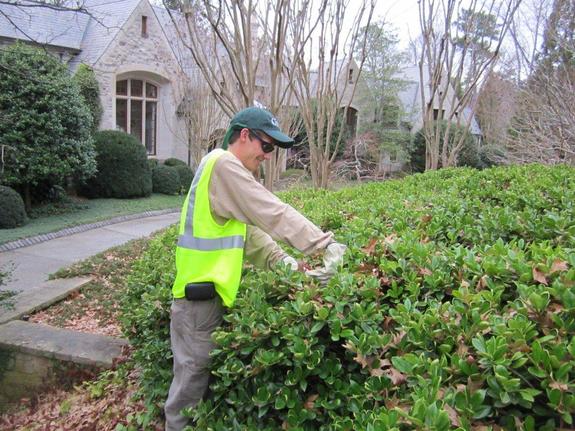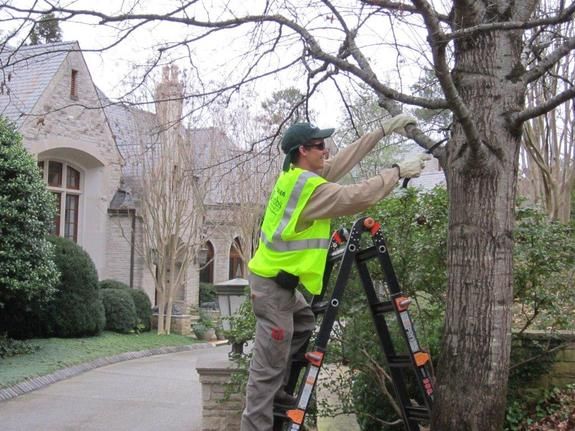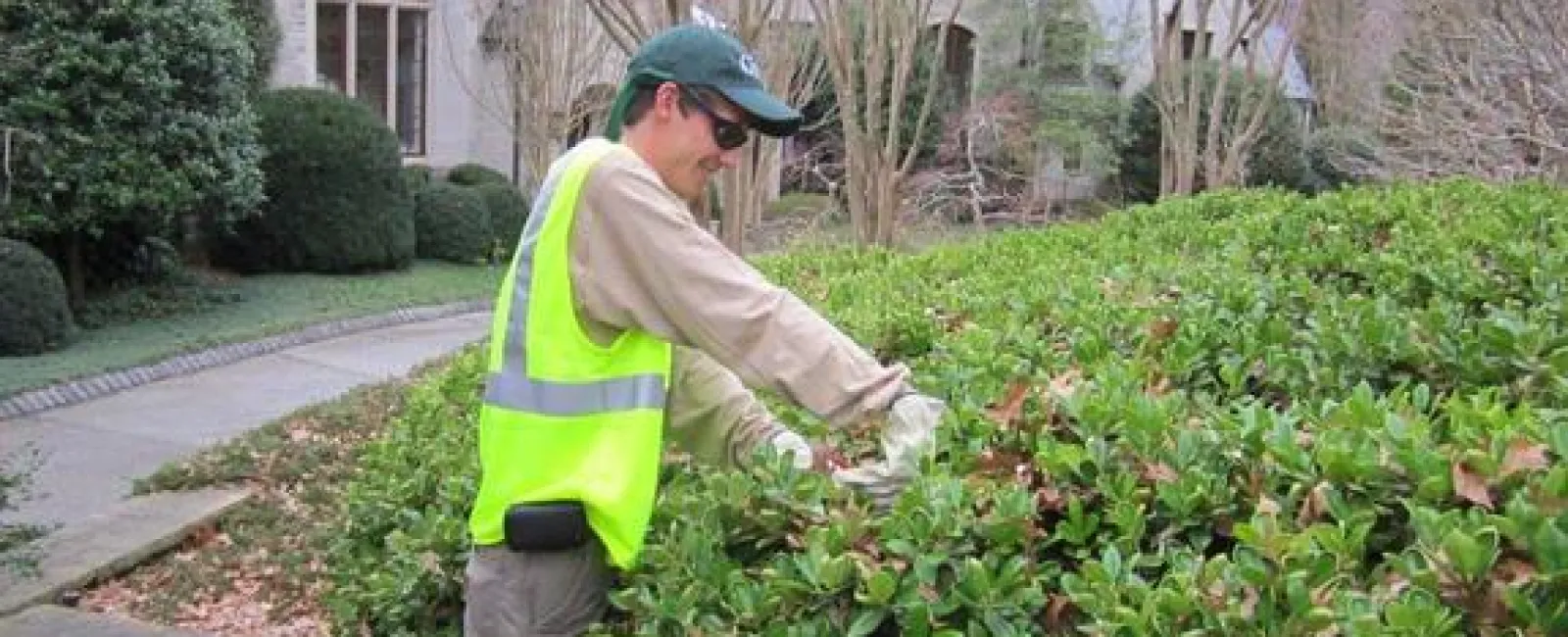A common question that many homeowners ask is "When is the best time to prune ornamental trees and shrubs?" The answer depends on the individual plant and whether you are pruning to maintain health and vigor, control the size and shape or to encourage flowering or fruiting.

Winter is a great time to prune and thin out many of your shrubs and trees in the South. To encourage the most flowers with summer blooming trees and shrubs that bloom on current seasons growth, such as Crape myrtles, lindens and certain hydrangeas like PG types (Hydrangea paniculata selections), prune these in late winter or early spring, before the leaves emerge or, in summer, after they bloom. The best time to prune spring blooming shrubs and trees like azaleas and crabapples is after they bloom in springtime. Wait to prune roses until buds begin to swell, usually late February to March, depending on the variety and weather conditions in your garden.
With established deciduous trees, January is a good time to perform annual maintenance pruning. Not only is the structure of the tree visible (the trunk and branching), making it easier to see where you need to prune, without foliage there will be much less debris to clean up. Below are a few tips for pruning in general:
Tools
- Use sharp tools, making sure to oil and sharpen blades each season.
- Use a quality pair of bypass pruners (with scissor-like action) instead of anvil pruners. These make clean cuts and cause less damage to bark and branches.
- If you are pruning branches larger than ½ inch in diameter, use loppers or a small folding hand saw, which makes it easy to access tight areas.
- Pole pruners (most have a cutting blade and a saw) are effective for reaching tall limbs.
What and How to Prune

- For large trees, hire a professional.
- Remove any dead, diseased, broken or dying limbs at any time.
- Remove limbs that grow down towards the ground and get in the way of clearance.
- Cut dying branches back to green wood.
- When removing diseased branches or stems, make your cuts a few inches below the diseased area.
- Remove branches that grow back into the tree or shrub or rub and cross other branches. This will help reduce potential sites for disease or insect problems.
- Remove suckers (vigorous shoots which are usually at the base of the trunk and come from underground roots) as they emerge. Remove water sprouts too. These usually grow along the main branches of trees. Not only are they unsightly, they can starve trees of much needed nutrients.
- If shrubs are sheared (tips are cut back) on a regular basis (this is common with certain hollies), new growth occurs near the tips of branches and sunlight can't penetrate the dense foliage. Because of this, the interior branches may become sparse and leggy. This is when thinning is a good idea. Use hand pruners to selectively remove branches back to a lateral branch. As a rule-of-thumb, remove only 1/3 of the shrub at a time. Not only will you reduce the size of your shrub but it will have renewed vigor.
Please let us know if we can help you with your pruning needs.
